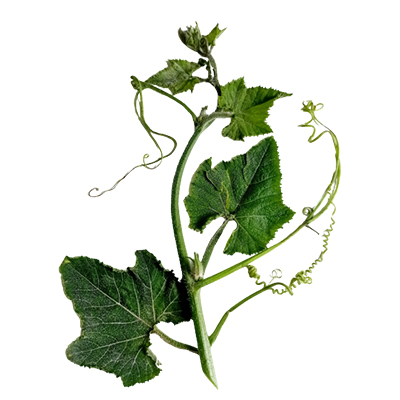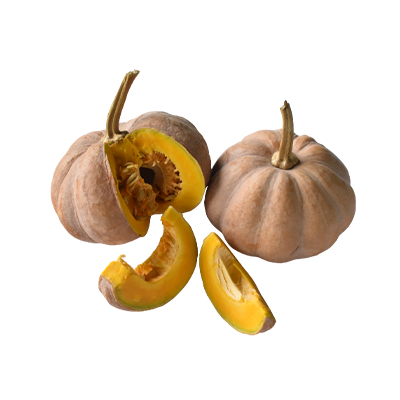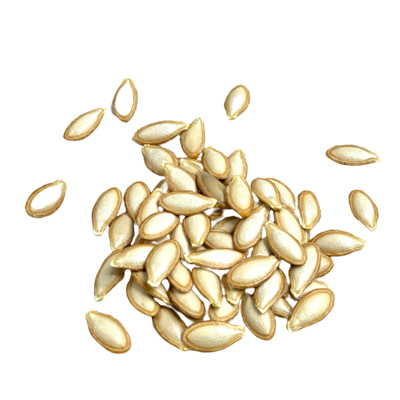Winter squash
Cucurbita moschata Duchesne
Cucurbitaceae
Location in our garden
Palm
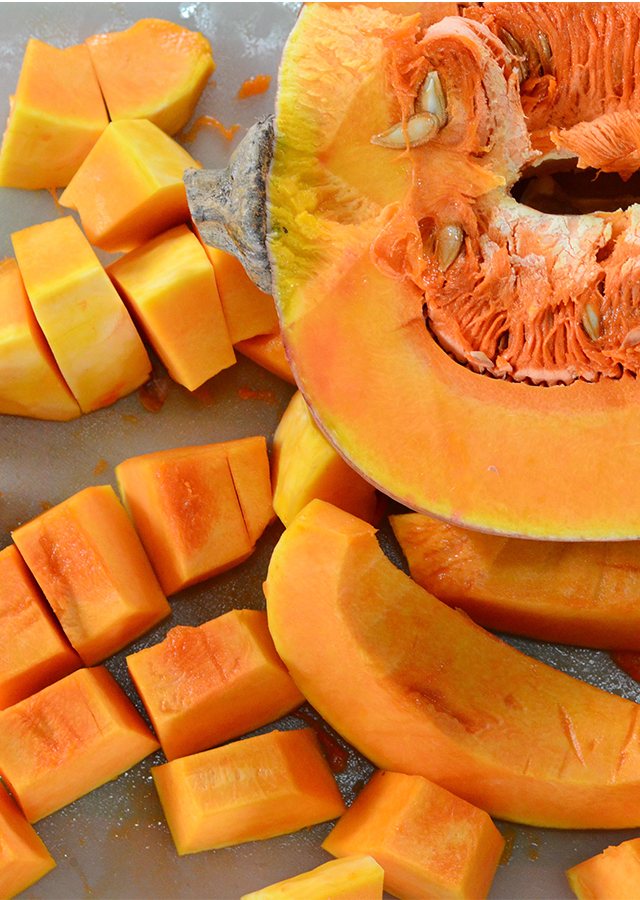
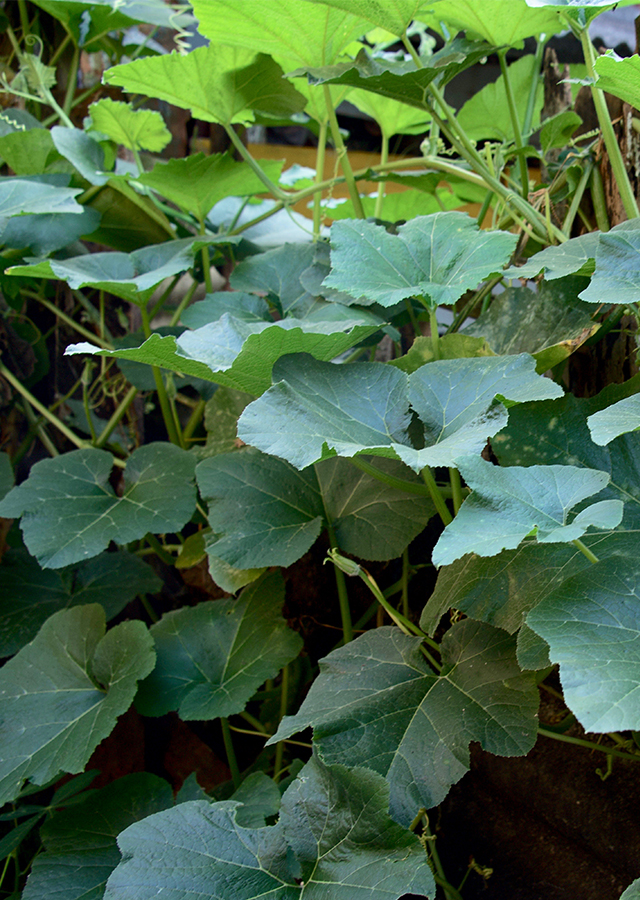
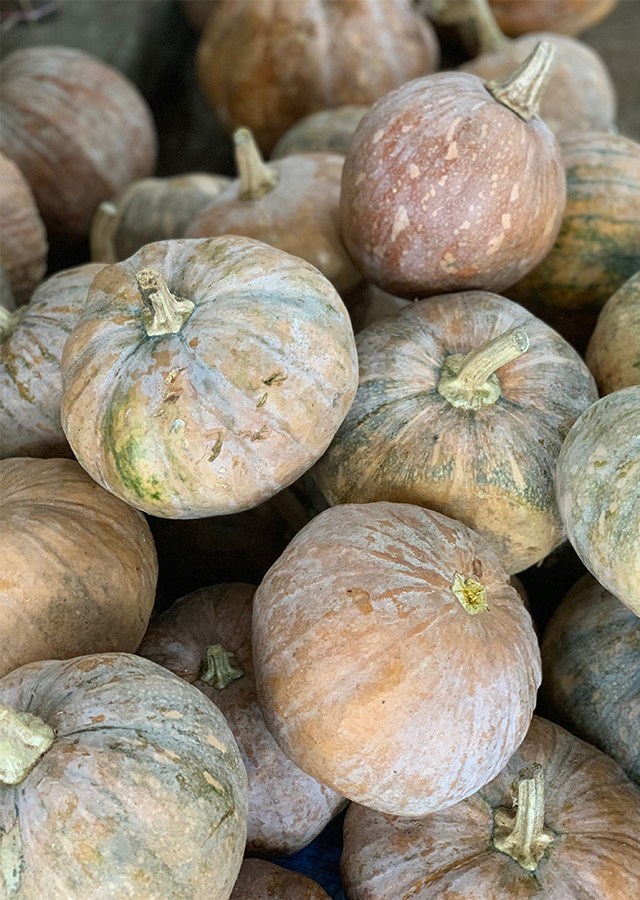
Synonym
Cucurbita colombiana (Zhit.) Bukasov
Cucurbita moschata var. claviformis Harz
Pepo moschatus (Duchesne) Britton
Habitus
Climbers. It is a monoecious, scandent or climbing squash.
Part Used
Shoots
Leaves
Seeds
Flowers
Fruit
Growing Requirements
Full Sunshine
Habitat
Terrestrial
Overview
Cucurbita moschata is a squash that was first domesticated in Central America and northern South America. It is an annual monoecious, creeping, vine-like that trails or climbs by tendrils along the ground. It is cultivated worldwide, and in low-land tropical areas of Asia, Africa and the Americas, it is the most widely cultivated Cucurbita species.
Vernacular Names
Pompoen (Dutch), Citrouille (French), Bisam-Kürbis (German), Tatak Labu Malaysia), Kabocha, Kabotcha, Nihon Kabotcha (Japanese), Hipak (Korea).
Agroecology
Pumpkin is a hot season crop that can be adapted to areas with mean monthly temperatures of 18-27° C. Cultivated from the lowlands to 1.500 m elevation in the tropics. It can be grown from the temperate zone to the tropics as long as the growing season is warm for a minimum of 150 days. Low temperatures are the least tolerant of this. It needs a fertile, welldrained soil of retentive moisture and a very wet, sunny and sheltered location.
Morphology
- Stem is creeping, vine-like, trails along the ground or climbs by tendrils.
- Branch is with short and long uniseriate trichomes and slightly angular stems and 3-5 branched tendrils and a wide one.
- Leaves are alternate, long petiolate, simple, have white blotches, shallowly lobate with three to five ovate or triangular lobules.
- Flowers are pentamerous, solitary, axillary, large and bright yellow to orangey-yellow.
- Fruit size and shape differ greatly (usually according to the shape of the ovary): flat or rounded ribs, occasionally verrucose or granuose, with a thickened and durable rind, soft and smooth.
- Seeds are ovate/elliptical, measuring 8 to 21 x 5 to 11 mm and which have a yellowish-white surface.
Cultivation
- Seed - can be sown in situ or in containers. Within 2 weeks, germination should take place. Sow 2 or 3 seeds per pot and thin out to the best plant when starting in containers. Grow them quickly and plant them when they're about 10 cm high.
Chemical Constituents
- Oleic, linoleic, and palmitic acids. Seed oil was also found to be rich in tocopherols with a predominance of δ-tocopherol. Protocatechuic, caffeic, syringic, vanillic, p-coumaric and ferulic.
Traditional Medicinal Uses
- Seeds : Antioxidant, Antihypercholesterolemic, Antiparasitic/Anthelminthic, Anti-prostate, Bladder stone alleviation, Hypotensive, Antiarthritic, Antidepressant
- Stem : Antiobesity
- Fruit : Antidiabetic
- As a vermifuge, seed is used. For the relief of abdominal cramps and distension due to intestinal worms, it is eaten fresh or roasted. Intestinal infection management . To relieve a number of kidney problems.
- Topically, flowers were used to soothe minor wounds.
- Roots : is used as a galactogue.
Part Used
Reference Sources
Missouri Botanical Garden. (2021). Cucurbita moschata. https://www.missouribotanicalgarden.org/PlantFinder/PlantFinderDetails.aspx?taxonid=279569.
RBGKEW. (2021). Cucurbita moschata Duchesne. http://www.plantsoftheworldonline.org/taxon/urn:lsid:ipni.org:names:320034-2.
Widjaja, E.A. & Sukprakarn, S. (1994) .Cucurbita L. In: Siemonsma, J.S. and Piluek, K. (F.ditors): Plant Resources of South-East Asia No 8. Vegetables. Prosea Foundation, Bogor, Indonesia. pp. 160-165.
